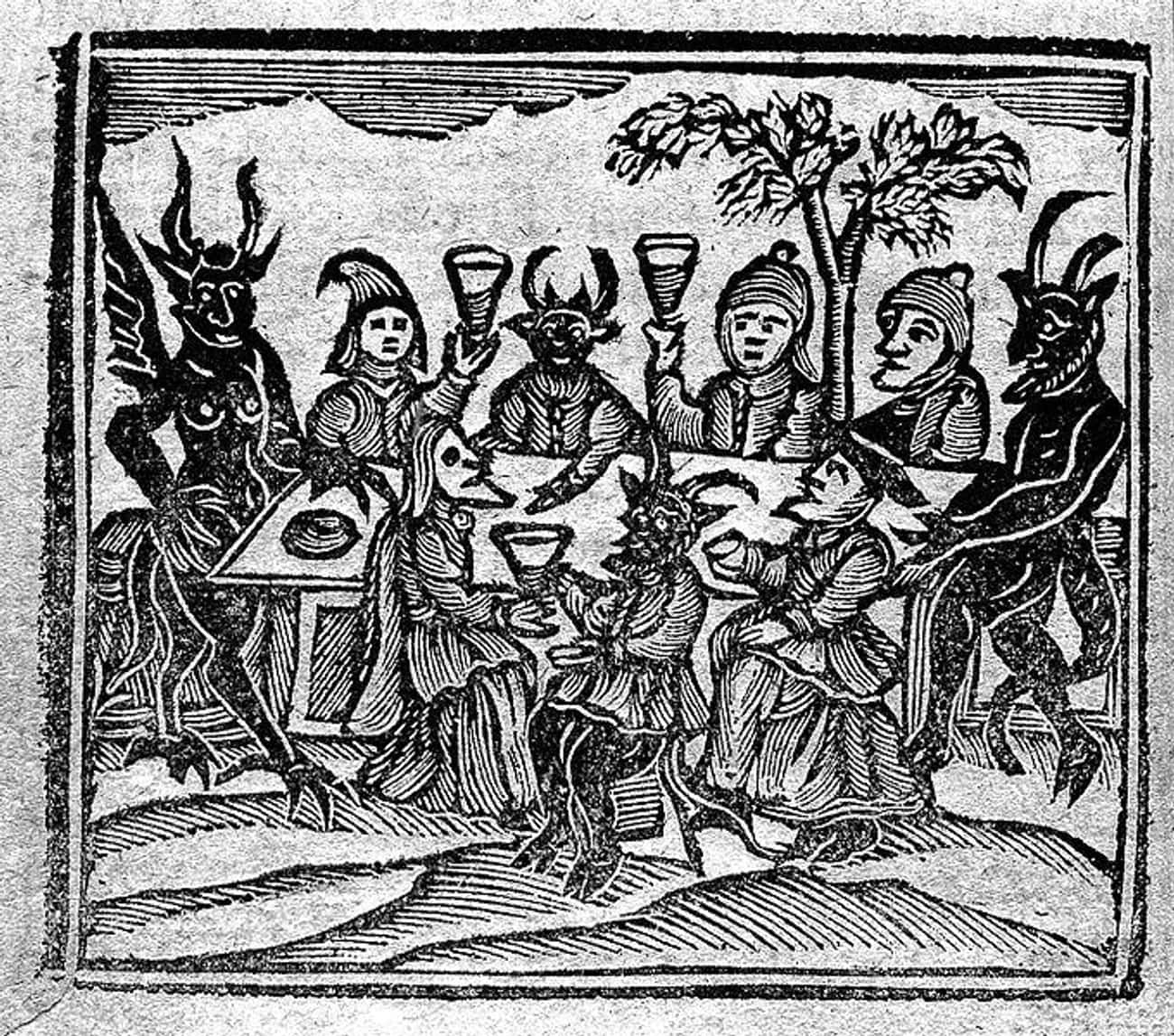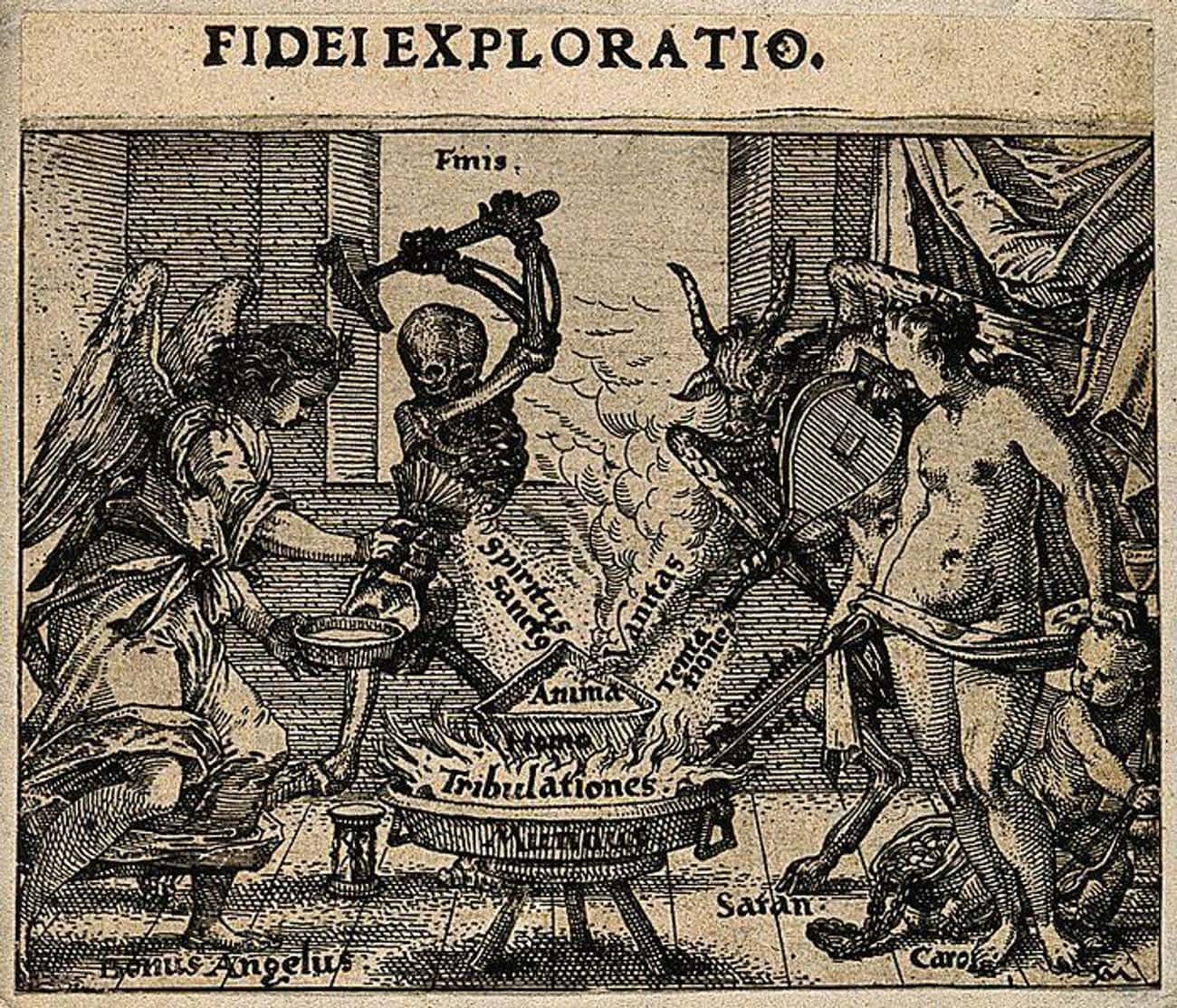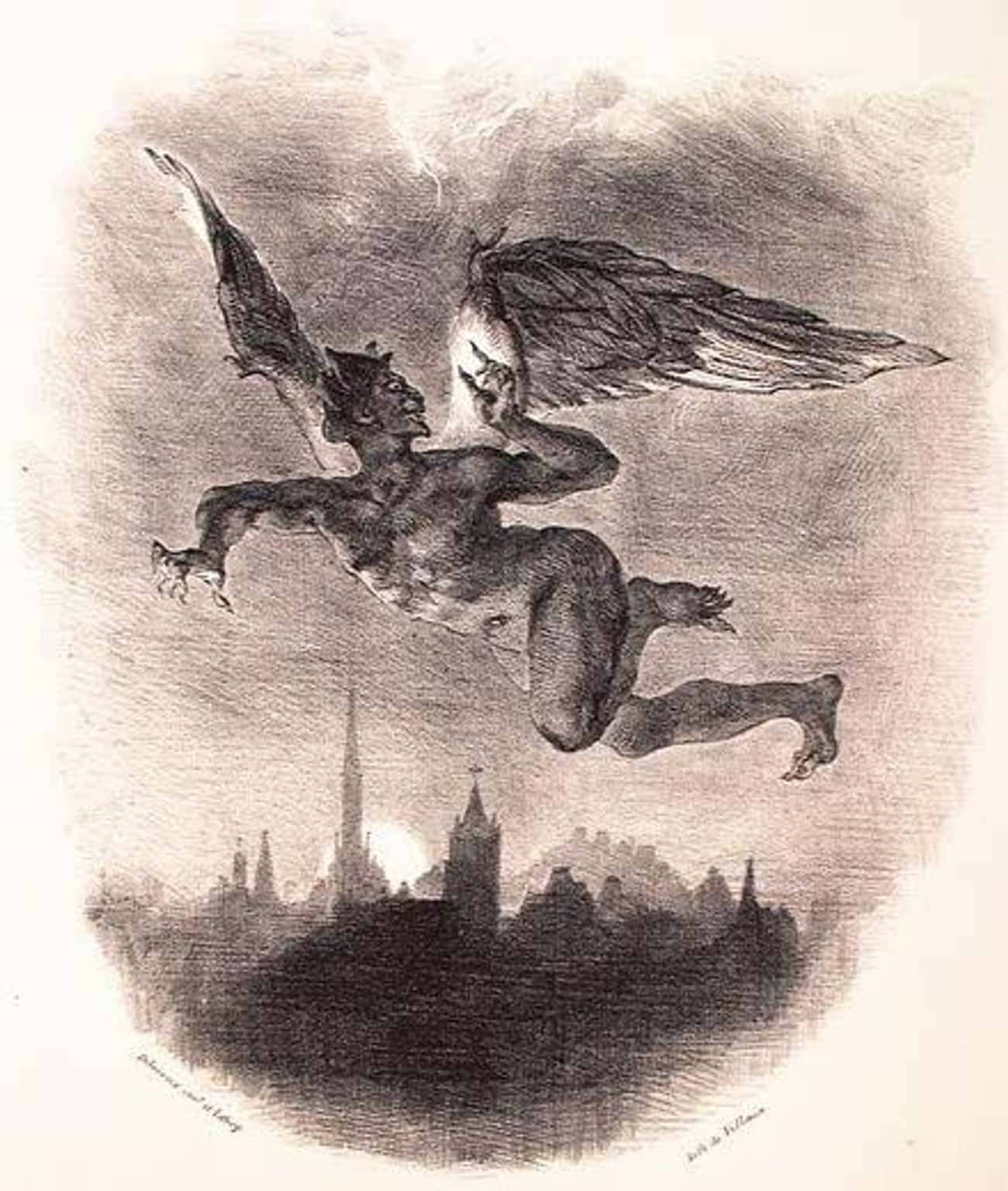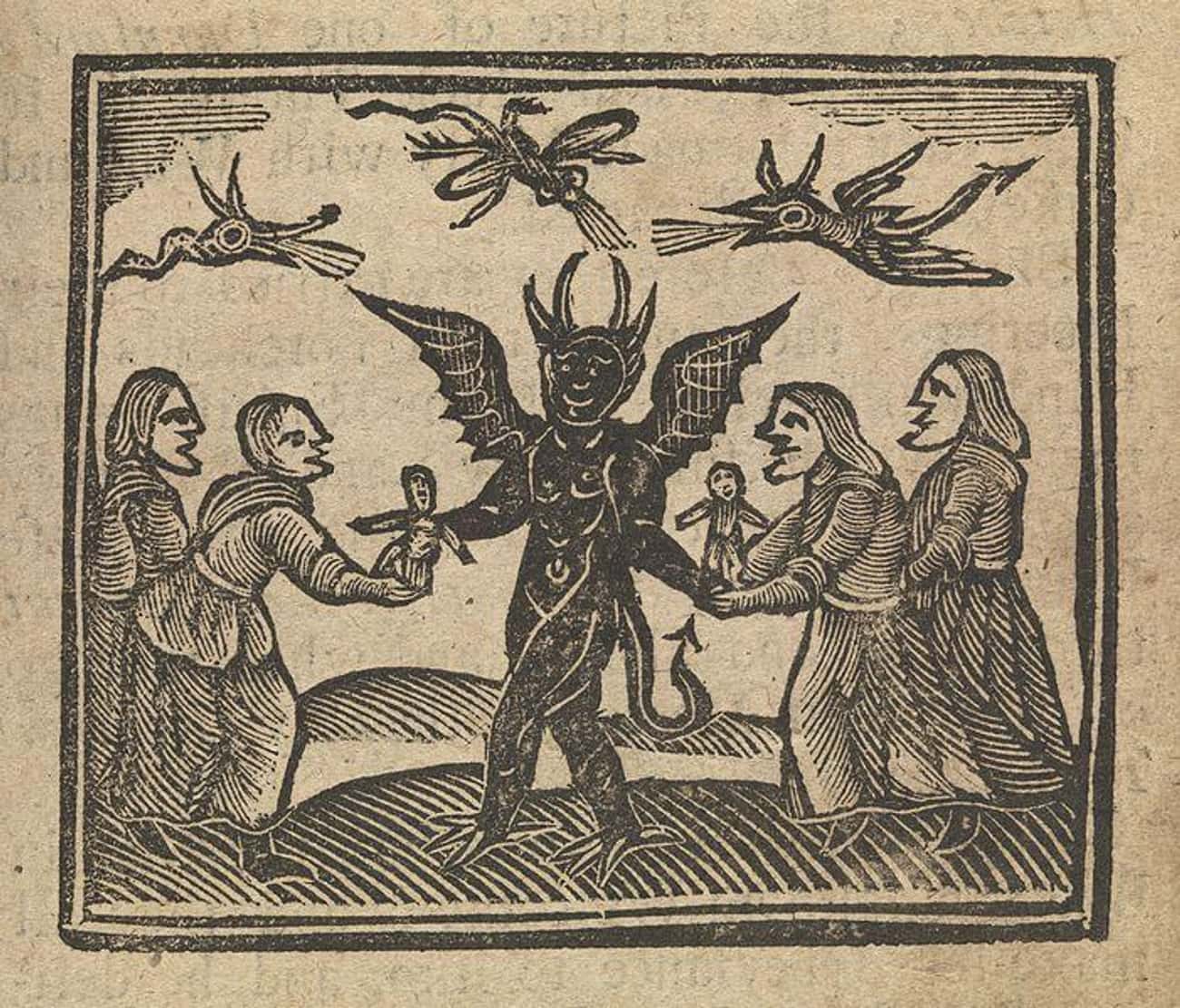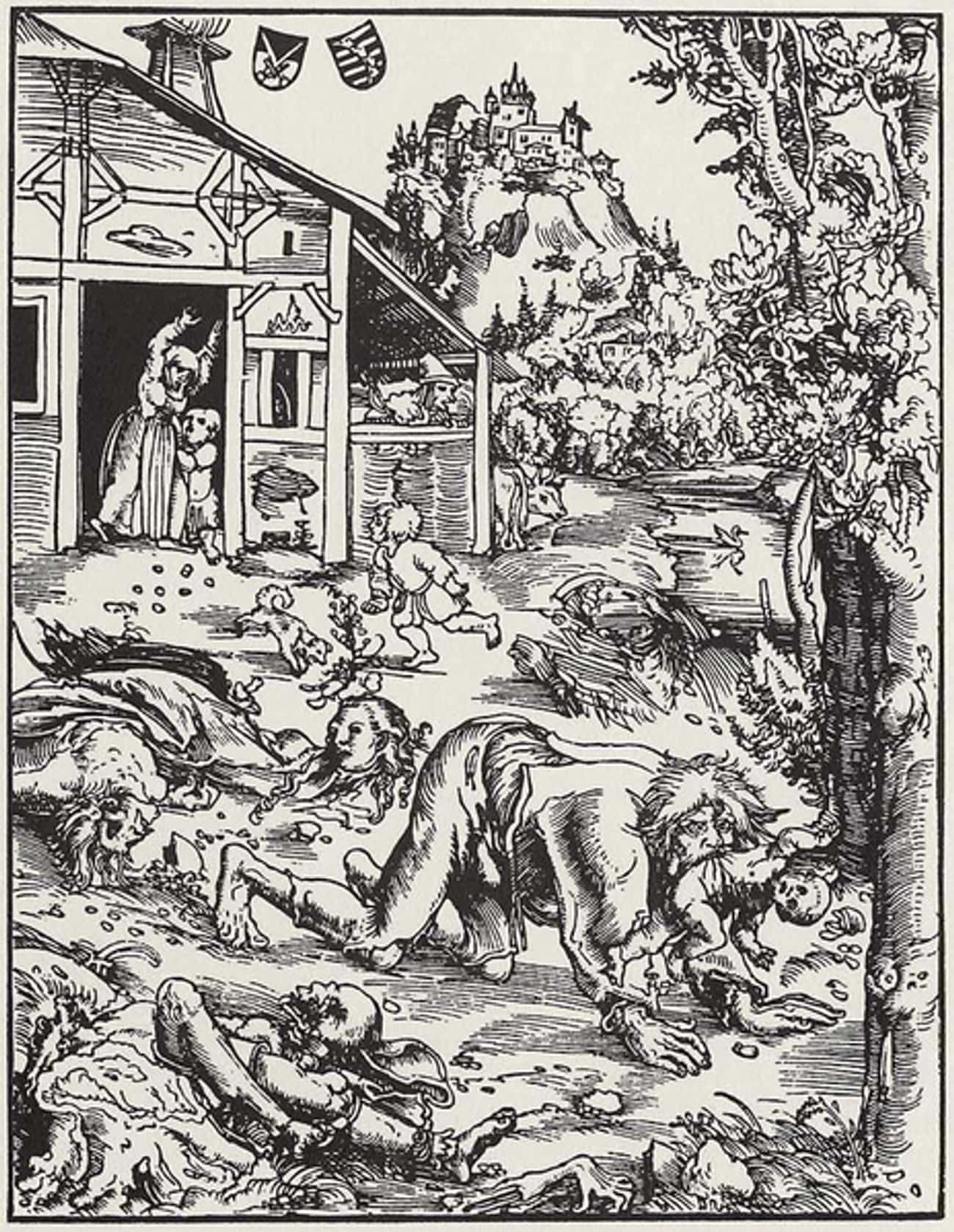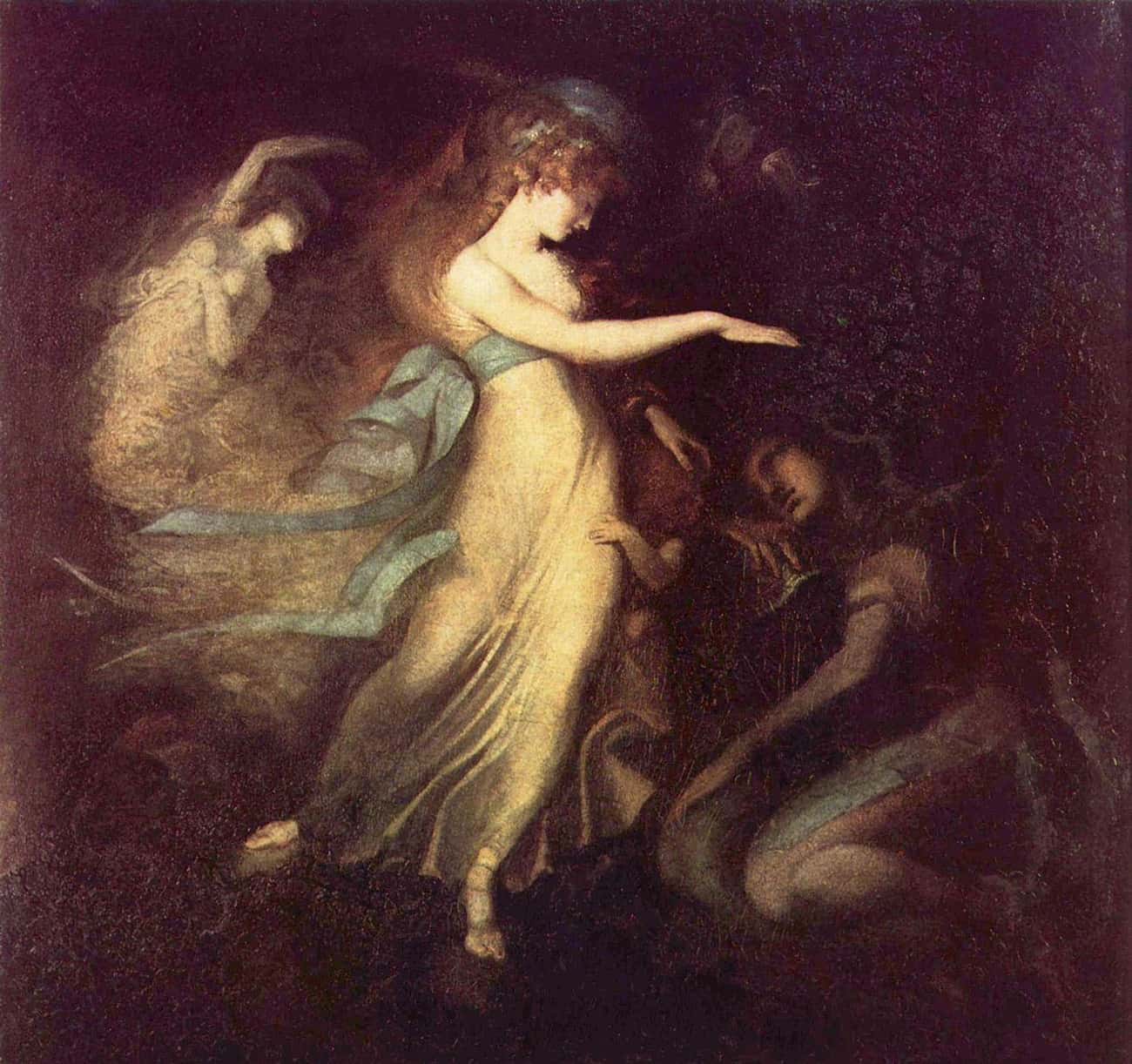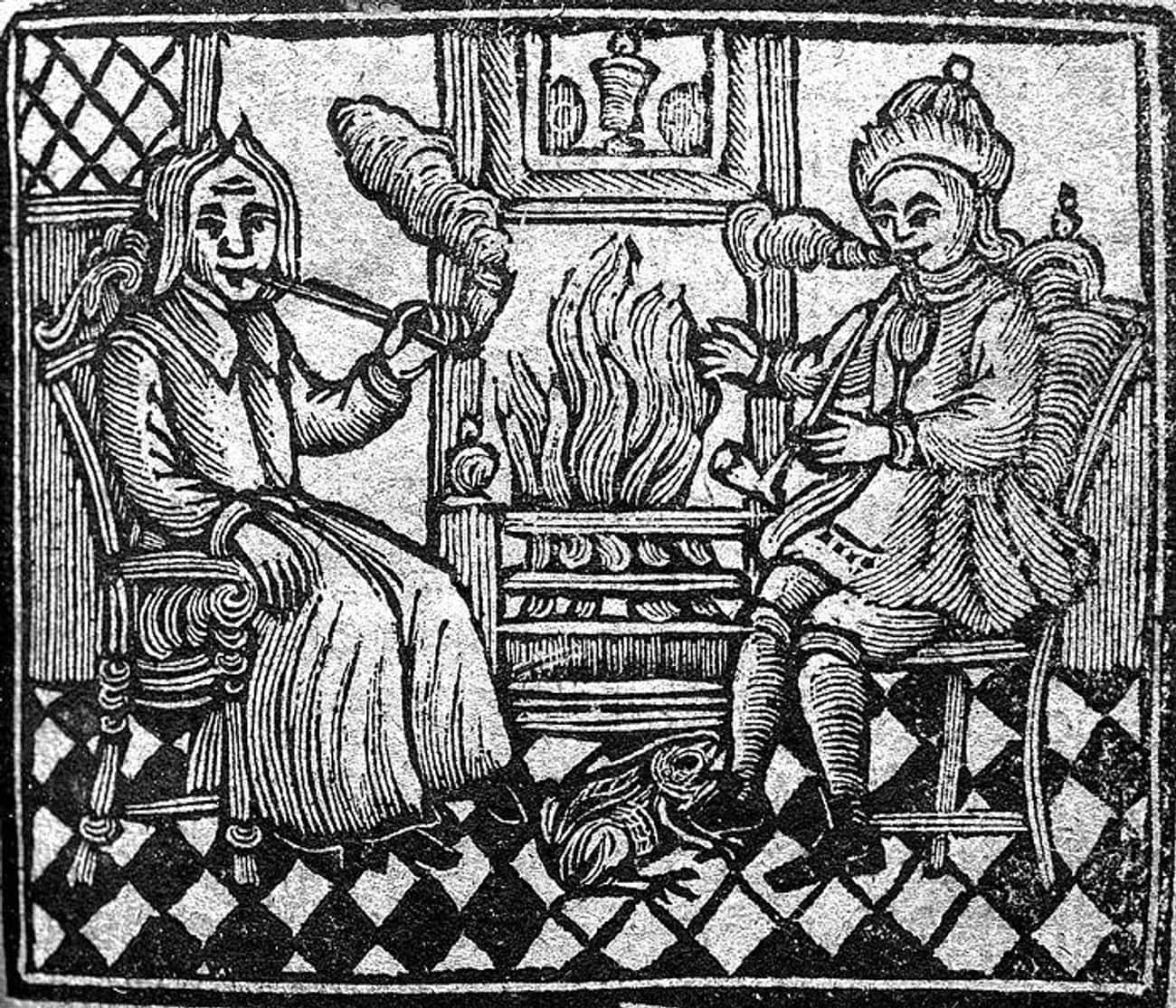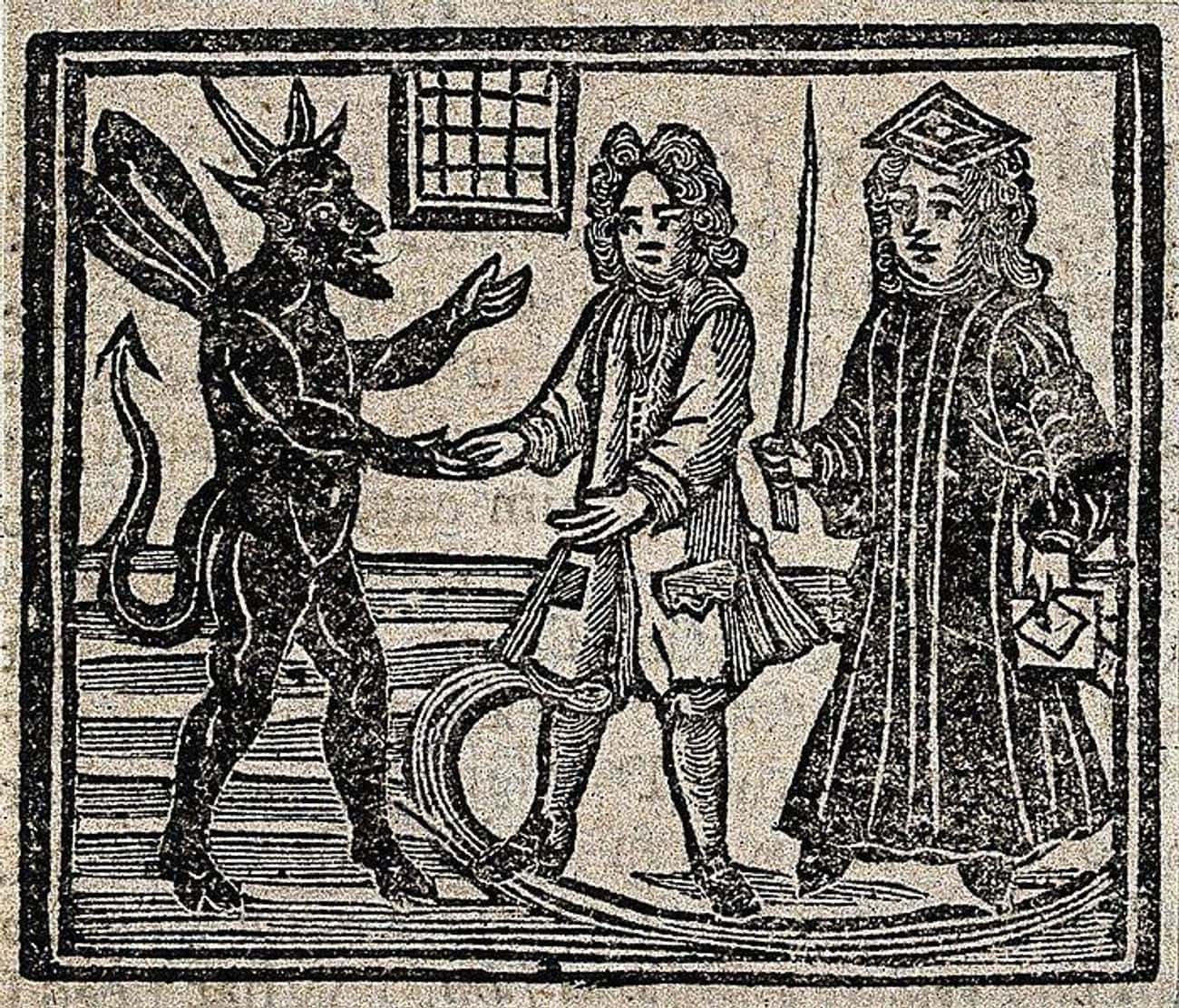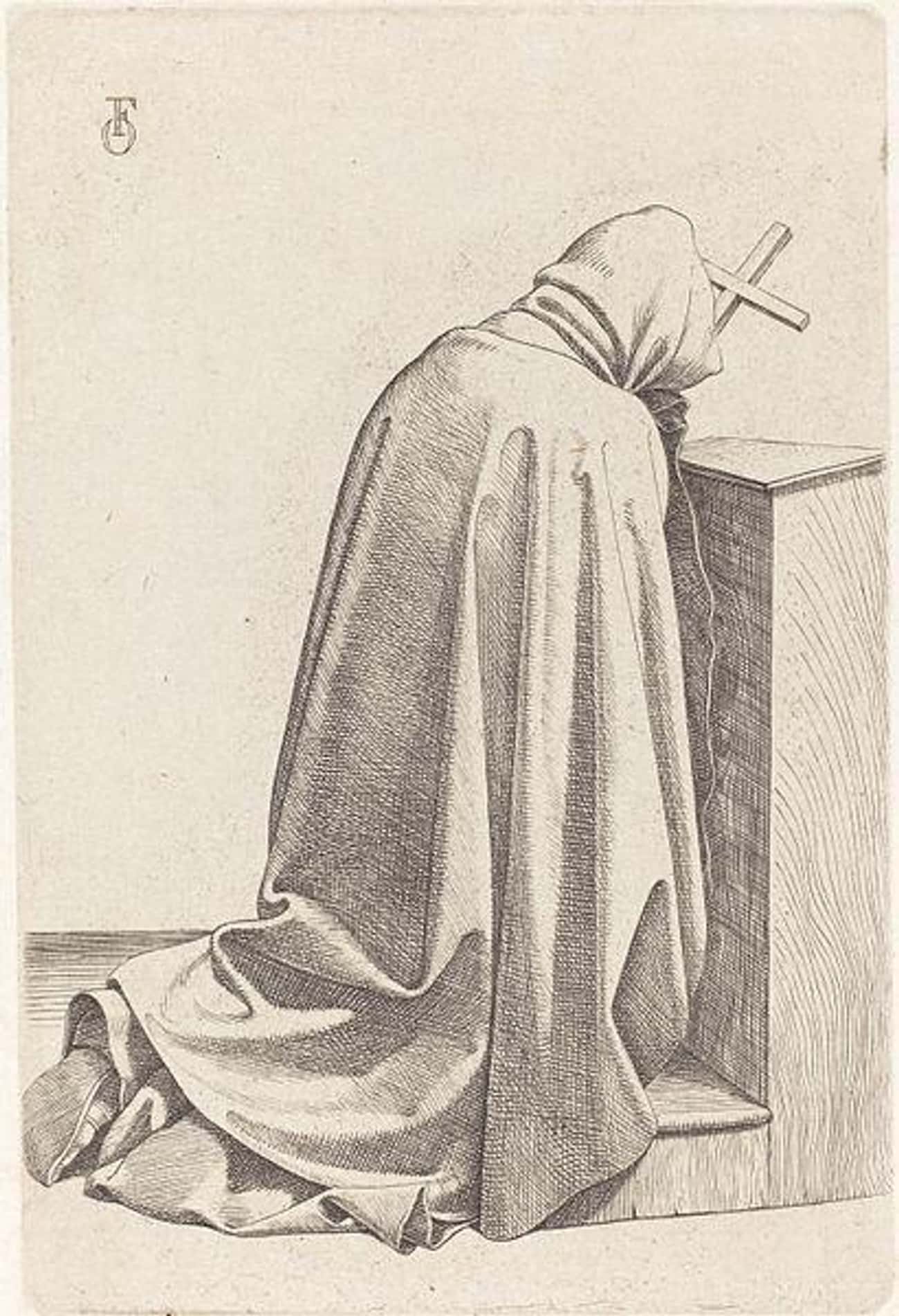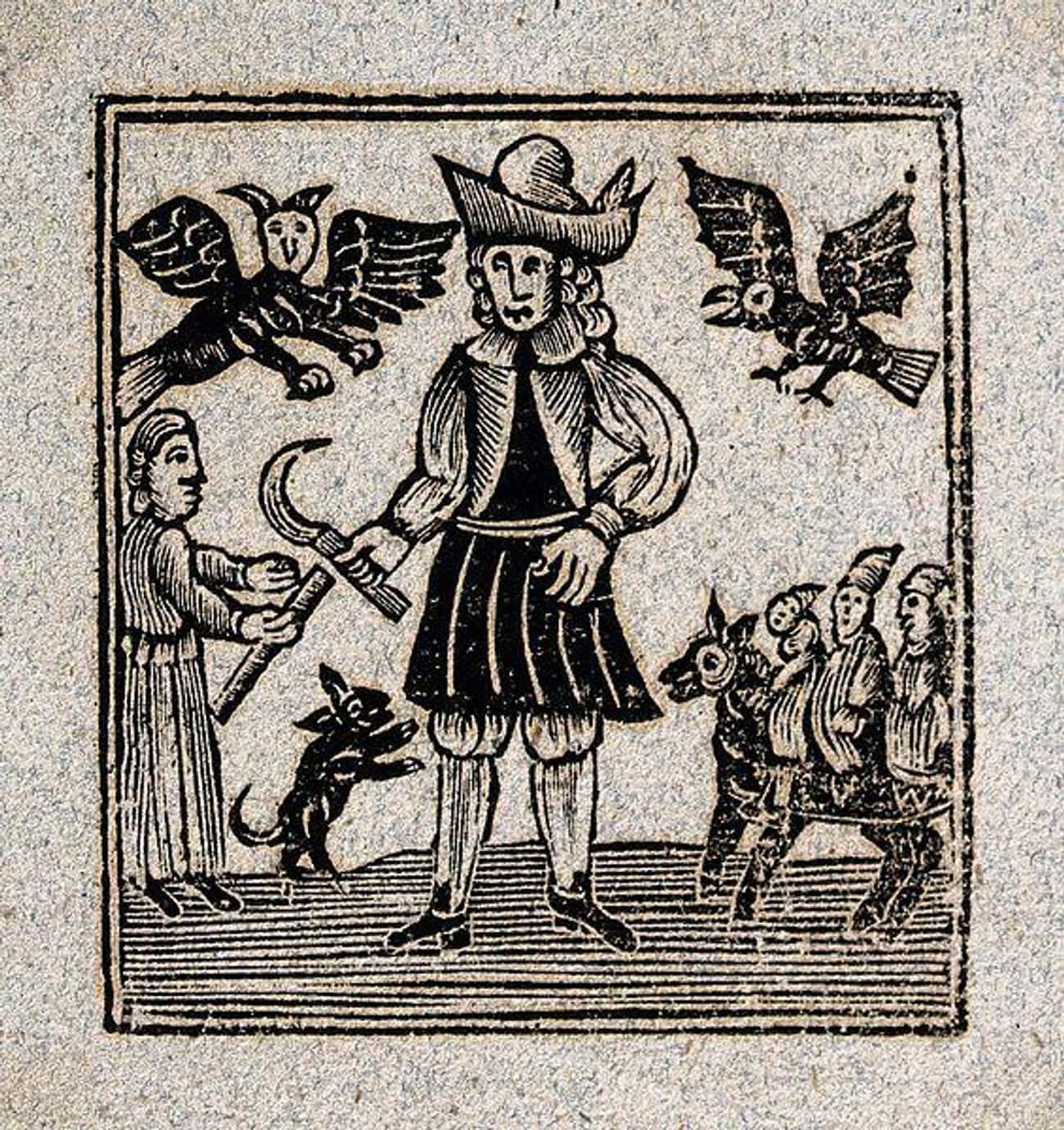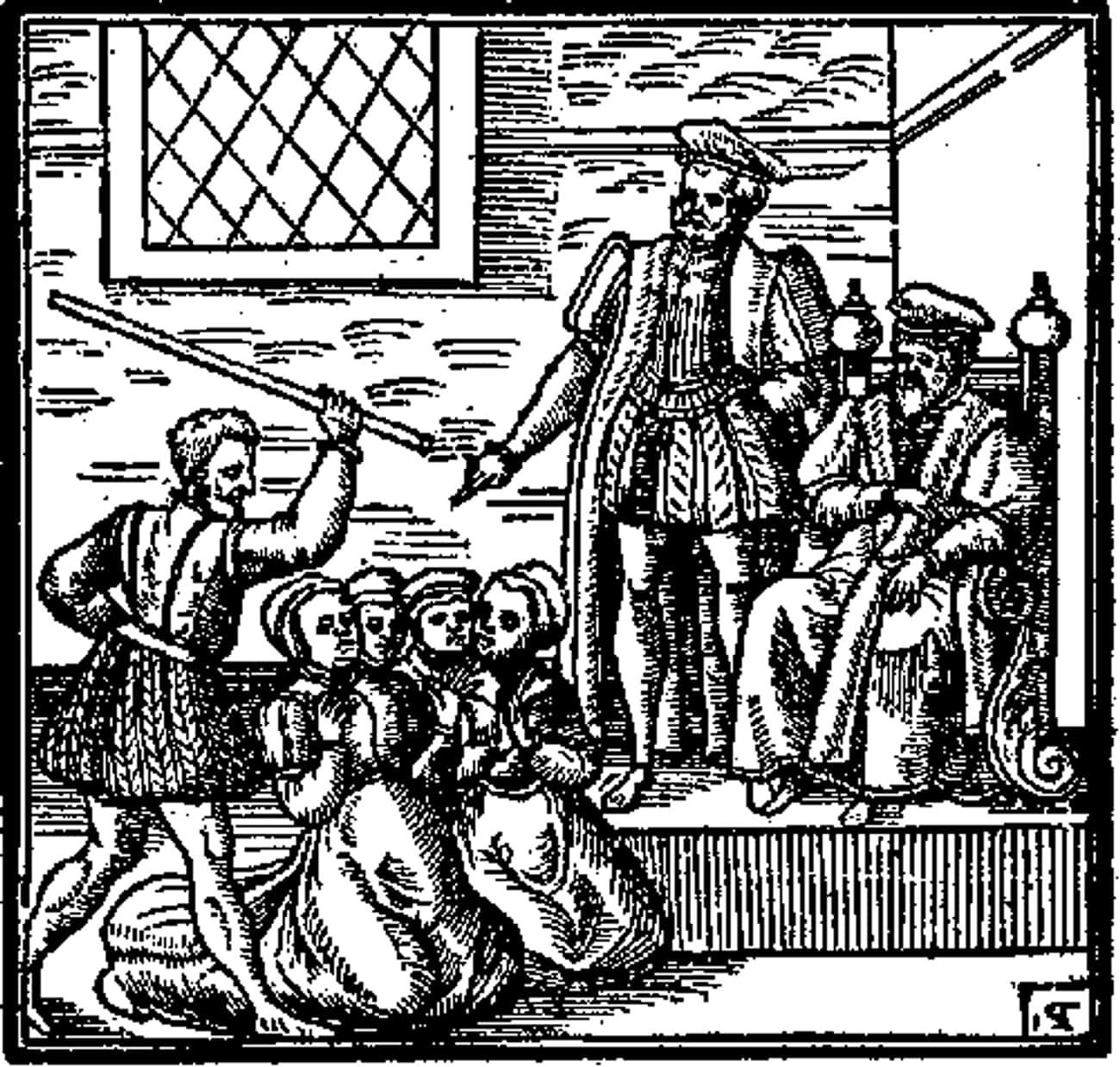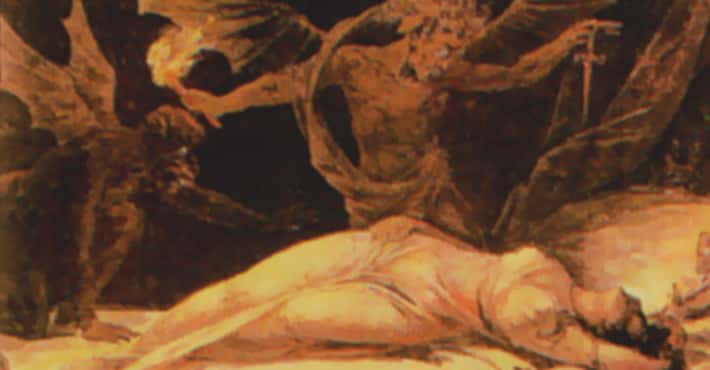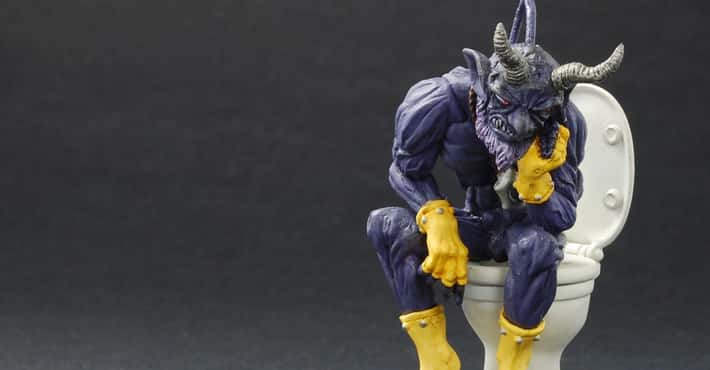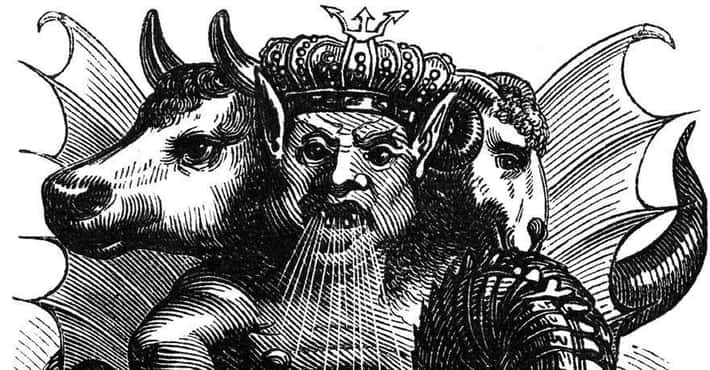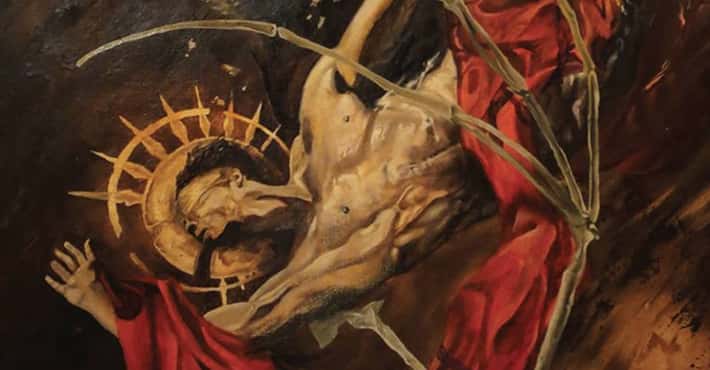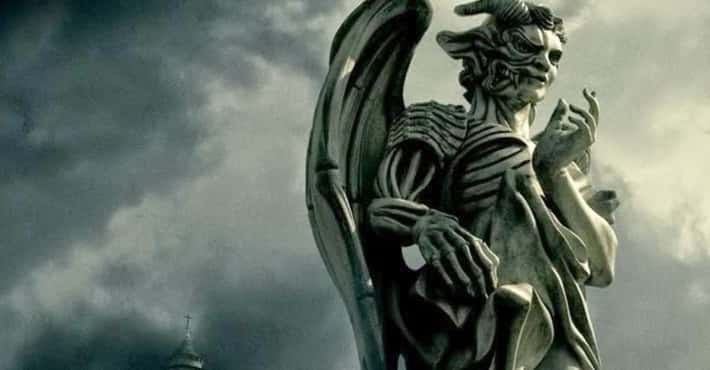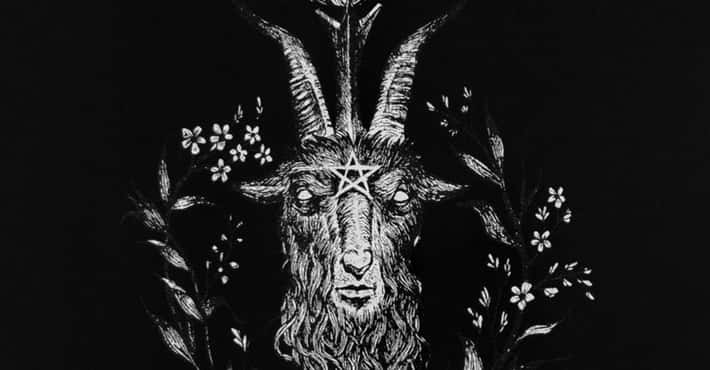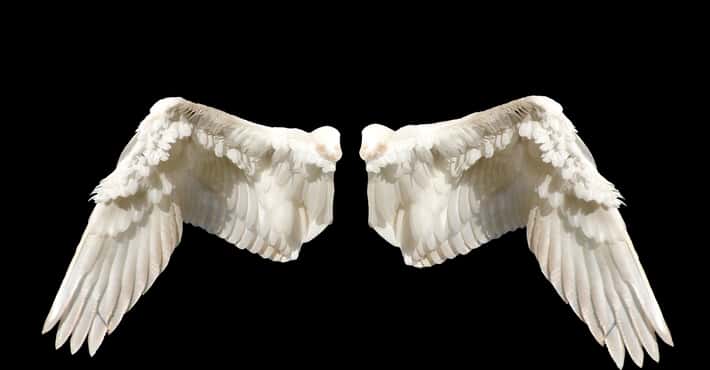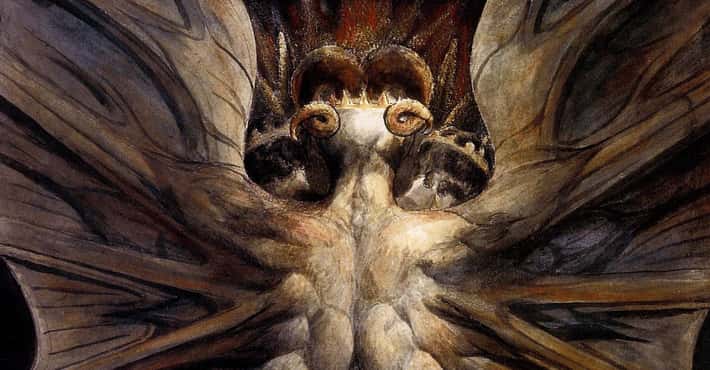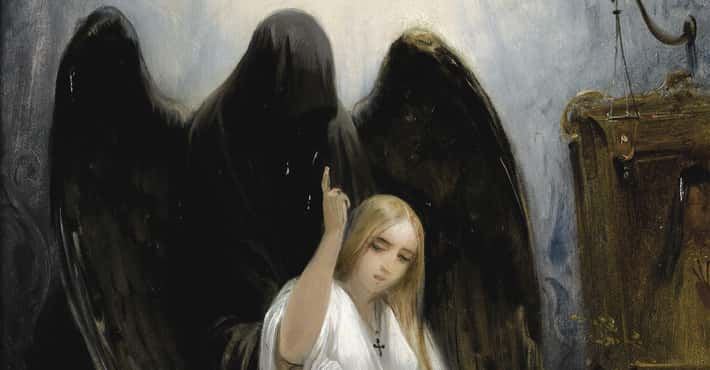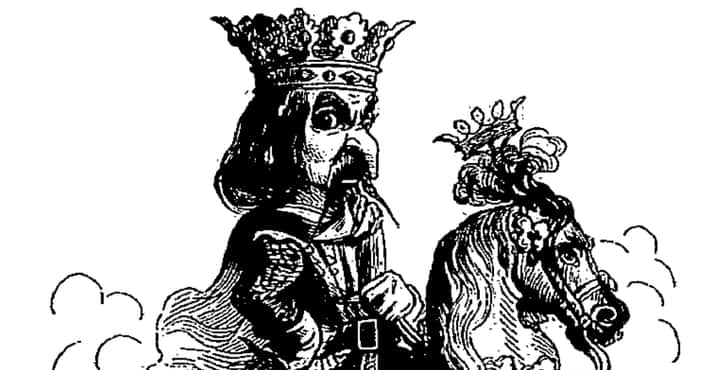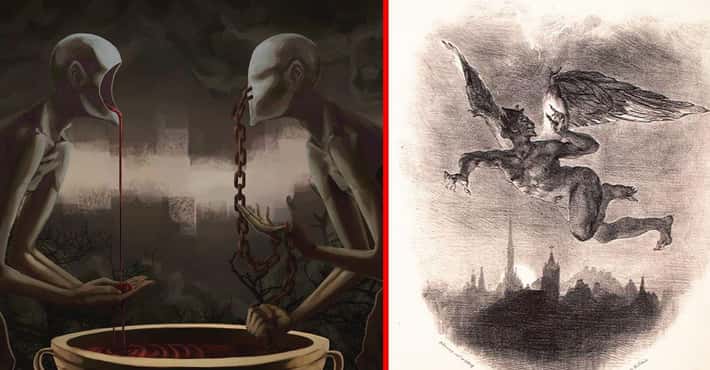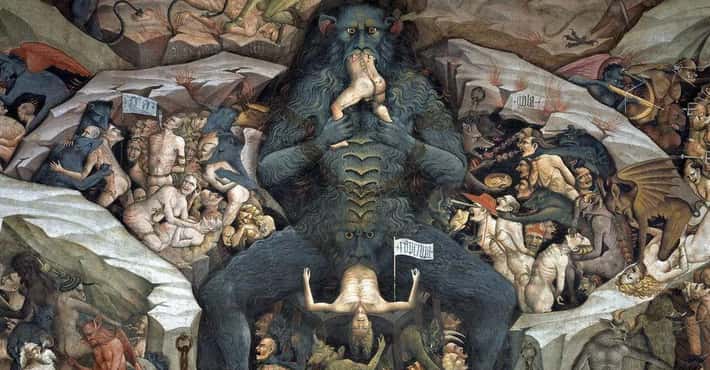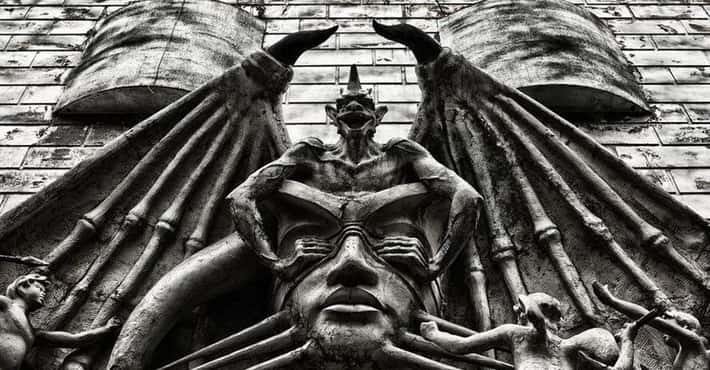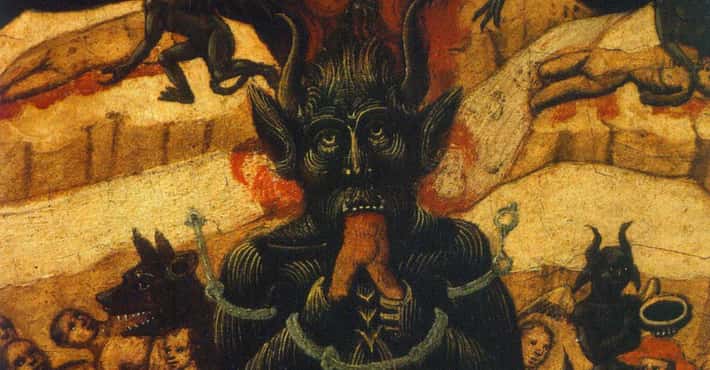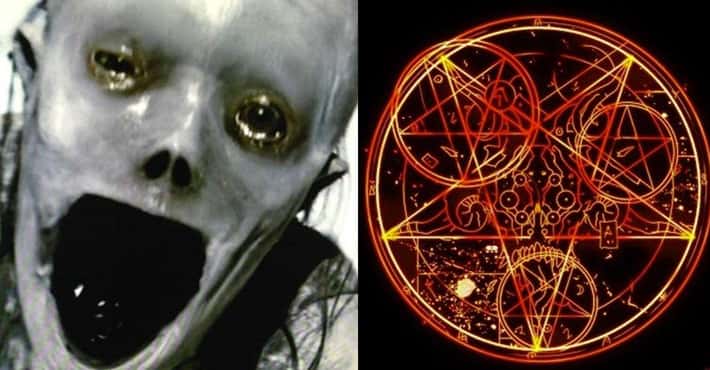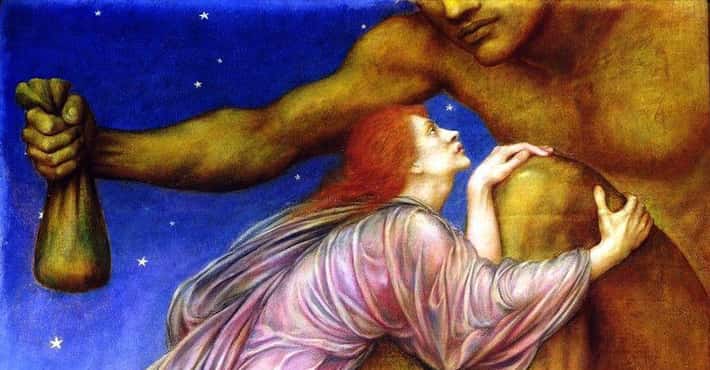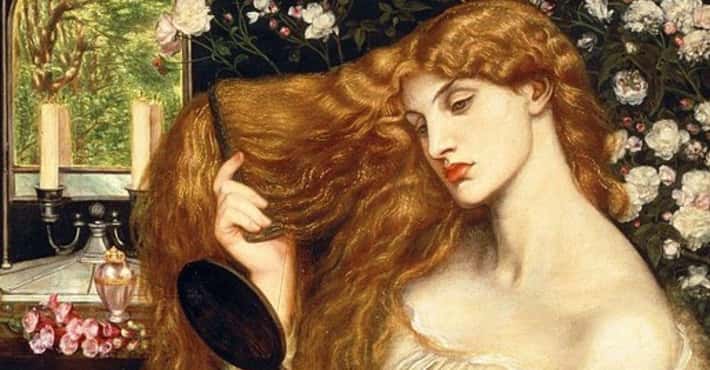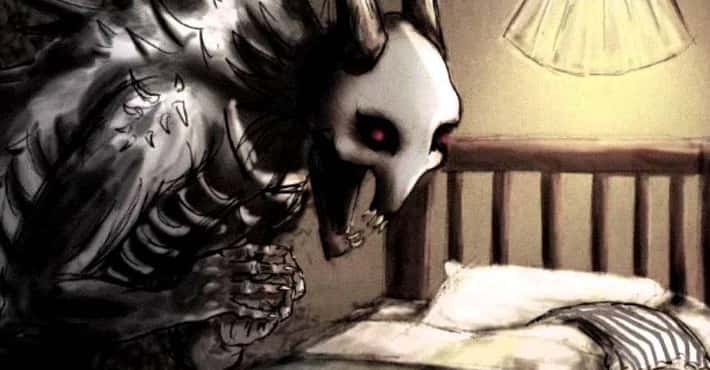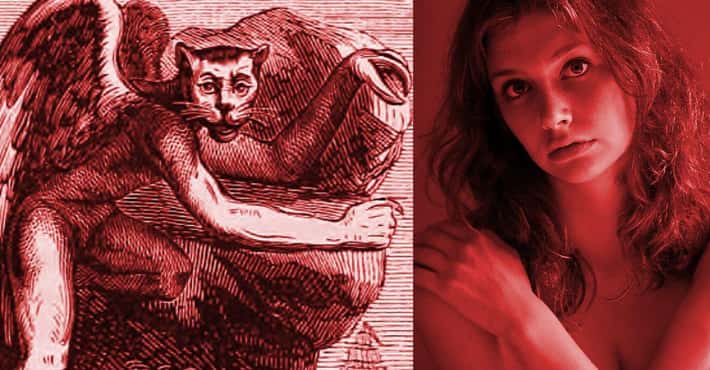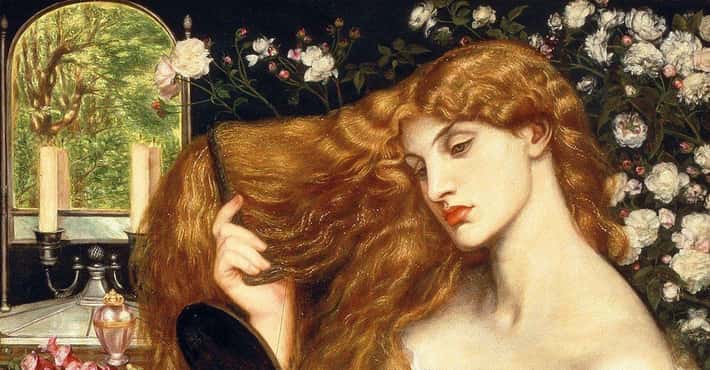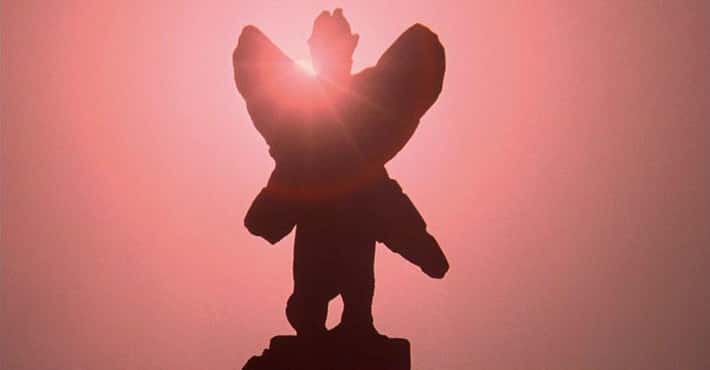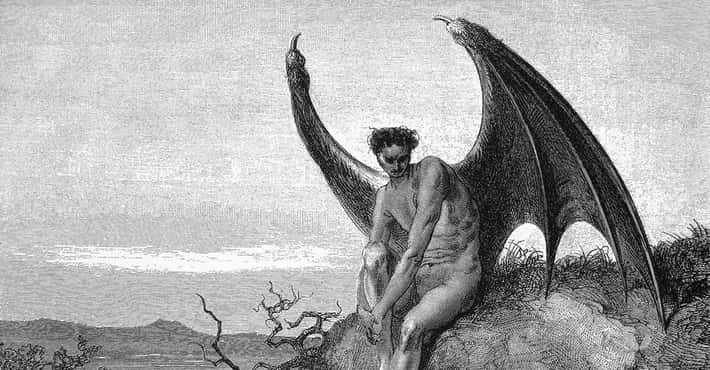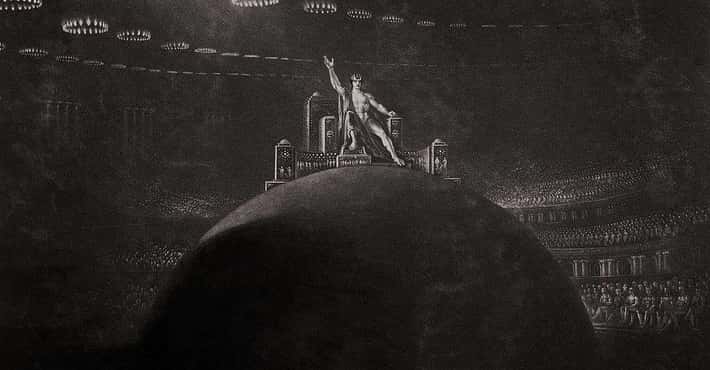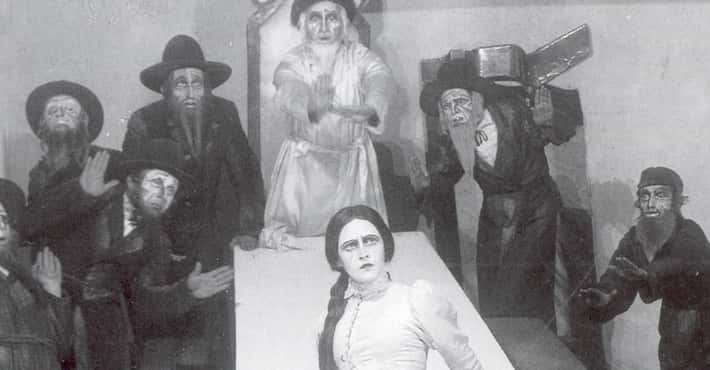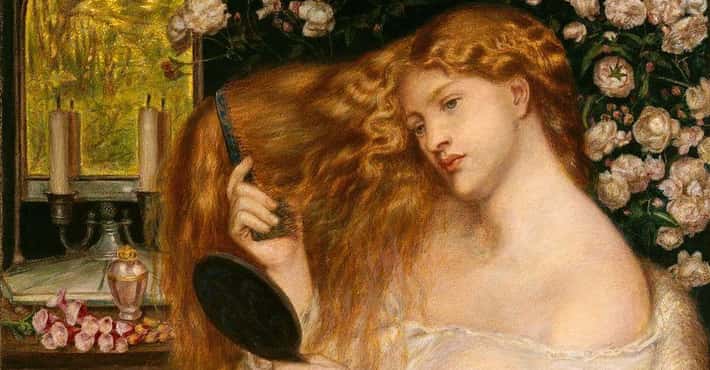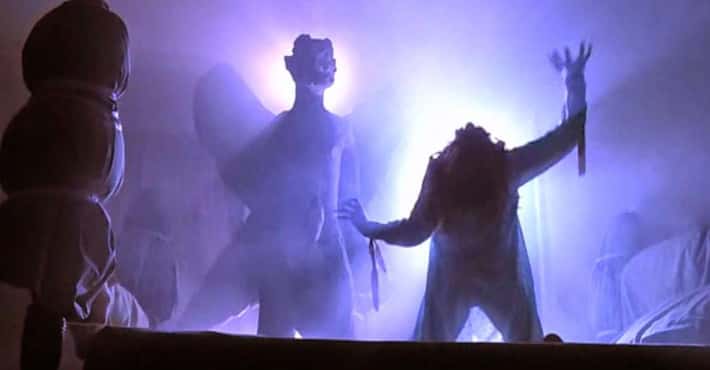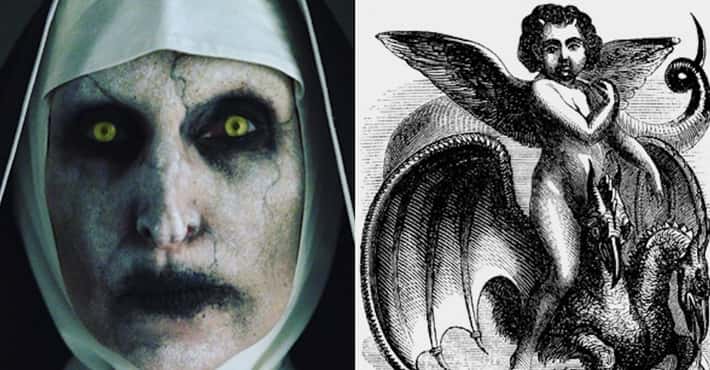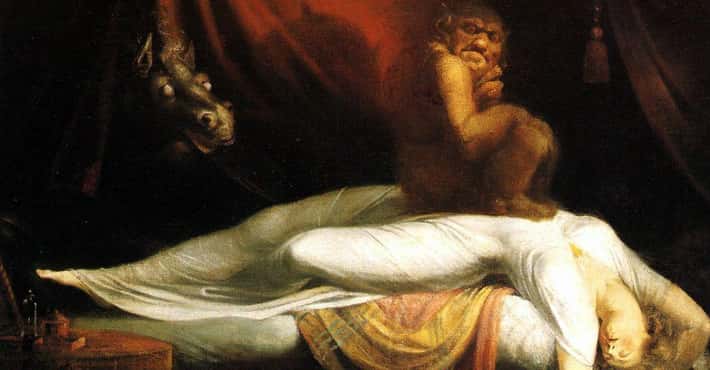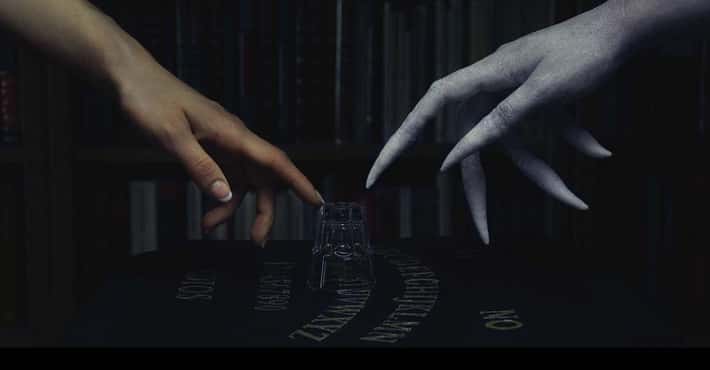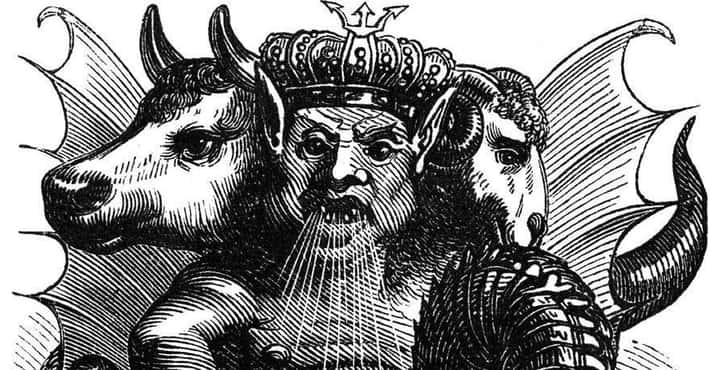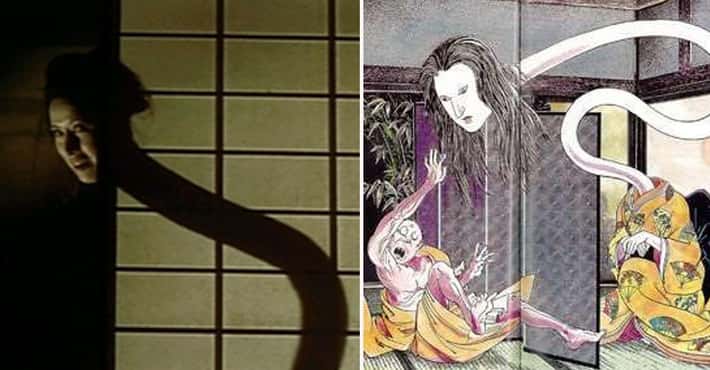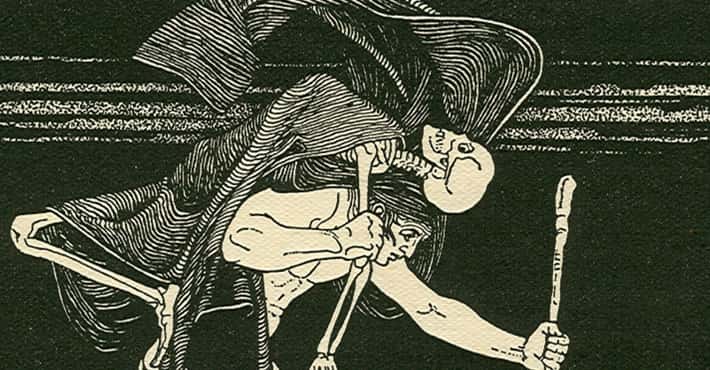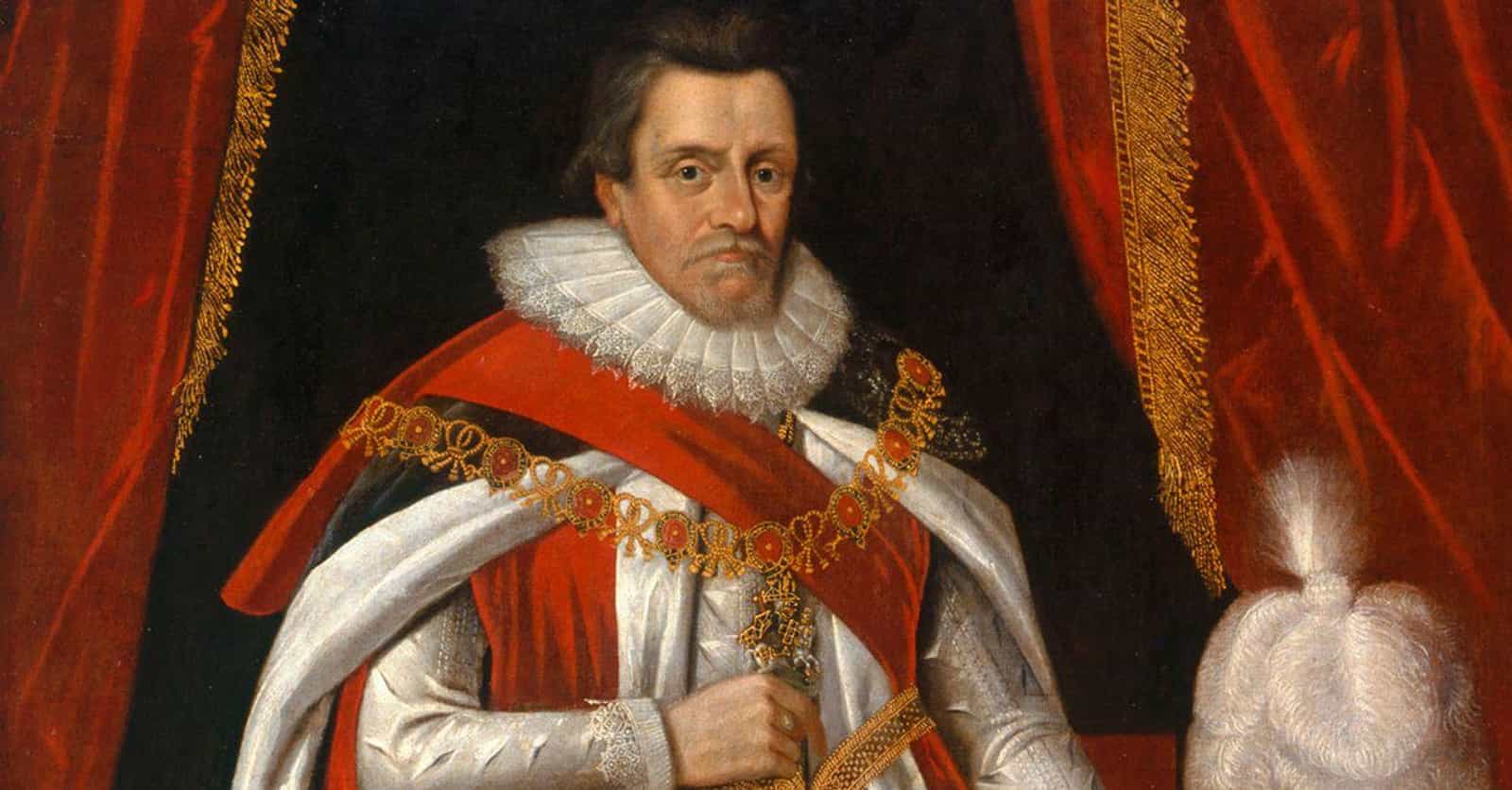
The Creator Of The King James Bible Wrote A Demonology Book At The Height Of Massive Witch Hunts
- Photo: Wellcome Images / Wikimedia Commons / CC BY 4.0
The Book Describes Demons Possessing Cadavers And Breaking Into Houses
James's text sometimes describes demons in ways that seem straight out of movies like The Exorcist. According to Daemonologie, demons will often take over bodies and force their way into houses. As creepy as that sounds, his text is even more terrifying. James writes:
For if they have assumed a deade body, whereinto they lodge themselves, they can easely inough open without dinne anie Doore or Window, and enter in thereat.
Furthermore, he claims a demon can take over a form that once belonged to an upstanding member of the community and, in doing so, instill anxiety in the populace.
- Photo: Wellcome Images / Wikimedia Commons / CC BY 4.0
The Book Notes The Strength Of A Possessed Person
According to the king, one of the major tell-tale signs of possession is when someone is incredibly strong:
I account the one of them to be the incredible strength of the possessed creature, which will farre exceede the strength of six of the wightest and wodest of any other men that are not so troubled.
James describes possessed individuals as having impenetrable skin as well:
And such an ironie hardnes of his sinnowes so stiffelie bended out, that it were not possible to prick out as it were the skinne of anie other person so far.
- Photo: Eugène Delacroix / Wikimedia Commons / Public Domain
The Book Describes Demons Using Bodies To Trick People
In Daemonologie, James describes the way demons use the bodies of a person's perished loved ones to prey on them. James specifically posits that demons are able to take over the bodies of the genuinely pious because the soul is clean and the body is dirty. He writes that demons inhabit the forms of friends, family members, or famous people in order to speak to people and trick them into doing the bidding of the Devil.
Scholars assert James's reasoning for this is a way to explain why people claimed to see friends and family members they knew to have passed.
- Photo: Wellcome Images / WIkimedia Commons / CC BY 4.0
The Book Claims Speaking Any Foreign Language Is A Sign Of Possession
Modern Christians are divided on whether or not speaking in tongues constitutes demonic possession, but James was less concerned with languages from the beyond and more with people speaking a language other than English. According to the king, one of the main ways to tell if someone is a demon is the "speaking of sundrie languages" that the possessed never could have learned on their own.
This belief likely comes from the fact that people in the 16th century were typically isolated and often illiterate even in their native language; a person had to be incredibly well-educated to speak a second language.
- Photo: Lucas Cranach the Elder / Wikimedia Commons / Public Domain
The Book Discusses Werewolves
While creatures like fairies were considered mere illusions by James, he acknowledged the existence of werewolves. In his text, he writes about lycanthropes as being spirits or people undergoing bouts of mania rather than being the cursed creatures that we think of in a modern context. James notes the ancient Greeks believed in the creatures, but rather than discussing their theories, he gives a personal explanation of their existence.
James writes that the Greeks considered these creatures to be "men-woolfes," but he concludes, "If anie such thing hath bene, I take it to have proceeded but of a naturall super-abundance of Melancholie, which as wee reade, that it hath made some thinke themselves Pitchers, and some horses, and some one kinde of beast or other."
- Photo: Henry Fuseli / Wikimedia Commons / Public Domain
The Book Dismisses Fairies As Myths
Although James believed in the existence of demons and witches, when it came to fantastic creatures like fairies, he was much more skeptical. Throughout the text of Daemonologie, James dismisses the ideas of supernatural beings - including fairies - as local myths.
The only time James seems to seriously consider the existence of fairies is when he suggests that sighting of these folkloric creatures are illusions created by the Devil. James writes, "the deuil illuded the senses of sundry simple creatures, in making them beleeue that they saw and harde such thinges as were nothing so indeed."
- Photo: Wellcome Images / Wikimedia Commons / CC BY 4.0
The Book Says Women Are Easily Tricked By The Devil
Why are witches in Christian lore predominantly female? According to James, it's because women are more malleable than men, and therefore more easily tricked by the Devil. Daemonologie puts the ratio of female to male witches at 20 to 1, and this figure went on to form the basis for the witch hunts that took place in the 16th and 17th centuries.
James explains why there's an abundance of female witches in the second book of his text:
That sexe is frailer then man is, so is it easier to be intrapped in these grosse snares of the Deuill, as was ouer well proued to be true, by the Serpents deceiuing of Eua at the beginning, which makes him the homelier with that sexe sensine.
- Photo: Wellcome Images / Wikimedia Commons / CC BY 4.0
The Book Refers To The Possessed As 'Patients'
Rather than refer to someone as being possessed, or as a body inhabited by a demon, James takes on a clinical view and refers to them as "patients."
It's likely James stated this in Daemonologie because he was trying to reclaim power from the new Reformed church. At the time, the church said that they were the only people who could dispel demons and take care of a possessed person, so by making a demonic intrusion seem more medical, James was essentially removing the church from the equation.
- Photo: Wellcome Images / WIkimedia Commons / CC BY 4.0
The Book Claims There Aren't Countless Demons
In Daemonologie, James is quick to state that while he definitely believes in demons, he doesn't think they're hiding in every shadow, waiting to snatch the first godless person they find. In fact, he believes this very idea is a trick being perpetrated by the Devil and upheld by the Catholic church. James writes:
All Devils must be lyars; but so they abuse the simplicitie of these wretches, that becomes their schollers, that they make them beleeue, that at the fall of Lucifer, some Spirites fell in the aire, some in the fire, some in the water, some in the lande: In which Elementes they still remaine. Whereupon they build, that such as fell in the fire, or in the aire, are truer then they, who fell in the water or in the land, which is al but meare trattles, and forged by the author of al deceit.
In other words, James claims the Devil wants to mislead you into thinking a multitude of demons fell from heaven with him, when in fact, it was a simple few.
- Photo: Johann Friedrich Overbeck / WIkimedia Commons / Public Domain
The Book Says The Only Way To Save Yourself From A Demon Is To Fast And Pray
According to James, there's no visit from an exorcist that can help you. The pope can't come to your rescue, and you'll never be able to fight off your demons physically. The only thing that can save you from possession by a demon is to pray and fast.
More to the point, James wants to make sure people know they can't just perform some kind of mystical rite to fend off a similarly mystical creature. James impresses upon his readers that anyone - specifically the Catholic church - who claims to offer respite from the Devil via sacrament or custom is merely selling you a bill of goods. The king specifies that God is the only thing that can save you.
- Photo: Wellcome Images / Wikimedia Commons / CC BY 4.0
James Based His Book On The Bible
It's not out of line to wonder where James got his information about demons. After all, it's not as if there were tons of manuscripts about demonology. In fact, the only major book preceding James's publication was the Malleus Maleficarum, which spread across Europe thanks to the newly invented printing press.
Scholars believe James did most of his research using the Bible. It's believed that because the post-Reformation church in Scotland was mostly Calvinist - holding the belief that only the Bible contained the truth about God - the king wouldn't have been using anything but that book for a reference.
- Photo: Unknown / Wikimedia Commons / Public Domain
The Book Likely Influenced Shakespeare's 'Macbeth'
Daemonologie didn't just influence the witch hunts of the time. It also likely played an important role in shaping one of the Western world's most important pieces of literature - Macbeth. In the Scottish play, William Shakespeare creates a trio of "weird sisters," a group of witches who use their knowledge of the future to propel Macbeth down a path of ruin.
Scholars debate whether Shakespeare used James's text to create the characters as a nod toward the king's work (to please the most powerful man in England) or as satirical commentary. In Daemonologie, James writes that witches can "rayse stormes and tempestes in the aire, either vpon Sea or land" - and Shakespeare directly acknowledges this in the witches' dialogue.
Early in the play, after a sailor's wife refuses to hand over some chestnuts, the first witch states:
And the very ports they blow,
All the quarters that they know
I' the shipman's card.
I will drain him dry as hay - Photo: Wellcome Images / WIkimedia Commons / CC BY 4.0
According To The Book, Demons Live In Scandinavia
James notes that most demons can be found in Scandinavia, specifically incubi and succubi. James writes that demons live in Finland and Norway ("Fin-Land" and "Lap-land" in his text) because that's "where the Deuill findes greatest ignorance and barbaritie, there assayles he grosseliest."
At the time of James's reign in England, Scandinavia was seen as a haven for witches - the region was undertaking its own witch hunts. While the grim investigations and trials have been over for centuries, witchcraft has proved resilient in Scandinavia; it's currently believed hundreds of Danes are practicing witches.


